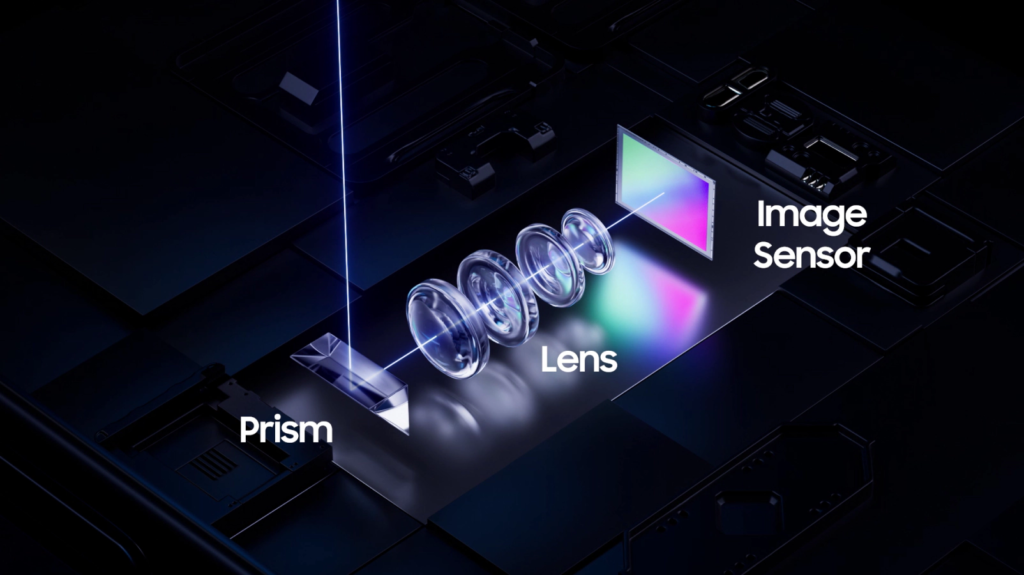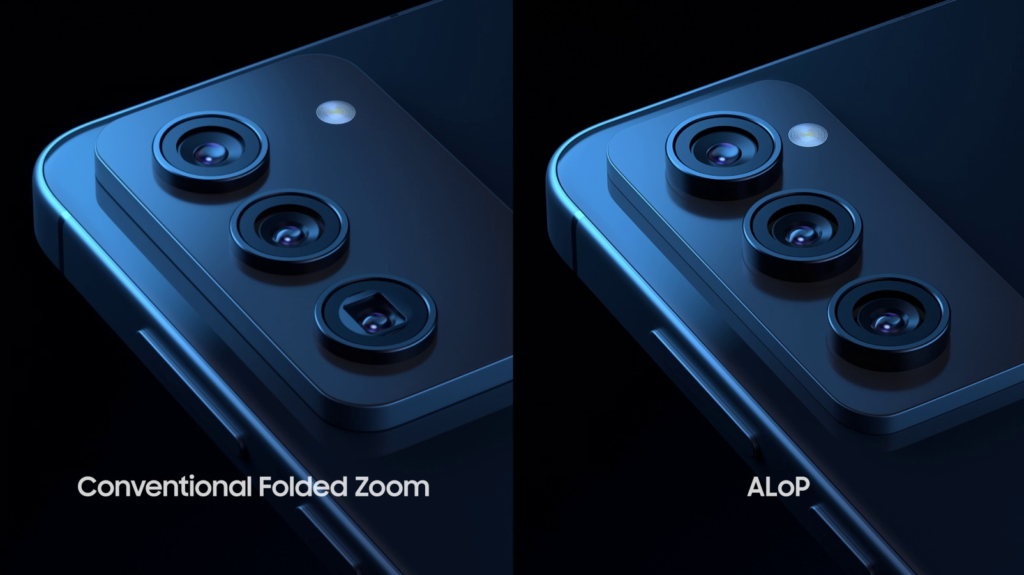Smartphone users worldwide have become accustomed to bulky camera bumps, which have grown larger as manufacturers strive to improve image quality and zoom capabilities. Devices like the Vivo X200 Pro and Oppo Find X8 Pro highlight this trend, delivering impressive camera performance at the cost of an increasingly noticeable protrusion on the back of the phone. While these bulky camera modules enable clear photos and advanced zoom features, they disrupt the sleek design of the phone and create usability challenges. For example, placing a phone with a large camera bump on a flat surface can result in an annoying wobble, impacting user experience.

Samsung, however, has announced a promising solution to the problem of bulky camera bumps: a new technology called ISOCELL ALoP (All Lenses on Prism). ALoP technology aims to combine excellent camera quality with a slimmer, more ergonomic design that integrates more seamlessly into a phone’s profile. Samsung’s innovation lies in rethinking the traditional arrangement of telephoto lenses to create a flatter, more compact camera module. If successful, this advancement could offer smartphone users both superior photography capabilities and an improved design that avoids the drawbacks of a protruding camera bump.
How Samsung’s ALoP Technology Works Adressing Smartphone Camera Bumps
Samsung’s ISOCELL ALoP technology re-engineers the structure of the telephoto camera by arranging the lenses horizontally inside the phone. Unlike conventional designs, where lenses are stacked vertically between the prism and image sensor, the ALoP system lays them out flat in alignment with the smartphone body. This unique arrangement not only reduces the height of the camera bump but also enhances the camera’s ability to capture high-quality images. One of the main benefits of this design is the increase in the effective pupil diameter (EPD), which enables a brighter lens aperture without adding thickness to the camera module. By increasing the EPD, Samsung’s ALoP system can gather more light, resulting in clearer images even in low-light conditions.

The ALoP system achieves its compact structure through a combination of a 40°-tilted prism and a 10°-angled sensor assembly, which reduce the telephoto camera’s overall height and length by 22% compared to standard designs. This allows Samsung to create a flatter camera that preserves the phone’s sleek appearance while delivering the advanced telephoto capabilities that users expect from a premium smartphone. By solving one of the major design challenges in smartphone photography, Samsung’s ALoP technology is poised to improve both the look and functionality of next-generation devices.
Advantages of ALoP for Photography and Design
One of the major benefits of Samsung’s ALoP technology is its ability to support an f/2.58 aperture with an 80mm focal length, offering enhanced image brightness and reduced noise even in low-light environments. Unlike traditional telephoto lenses, which often have smaller apertures and struggle in dark conditions, the ALoP system places a larger aperture lens in front of the prism. This improvement boosts the camera’s night photography performance, capturing brighter images with less noise. For users who frequently take photos in low light, this advancement could make a significant difference in photo quality.
In addition to performance gains, ALoP technology improves the appearance and functionality of the camera bump itself. By designing the camera module to be flatter and less obtrusive, Samsung has created a more aesthetically pleasing look that aligns better with the phone’s design. The camera bump now has a circular lens appearance rather than the typical rectangular prism shape found in folded optics, making it less noticeable on the back of the device. For users, this translates into a phone that not only looks more streamlined but also lies more steadily on flat surfaces, minimizing the wobbling effect caused by larger camera modules. This ergonomic enhancement will likely appeal to users who prioritize design and ease of use alongside camera performance.
Potential Integration into Samsung’s Future Smartphones
Samsung appears committed to incorporating ALoP technology into its future smartphone lineup, potentially starting with the release of a ‘Slim’ model in its S25 series, expected in 2025. This model could debut with ALoP technology, allowing Samsung to test and refine the new camera design before rolling it out across other models. Industry experts speculate that Samsung may continue refining ALoP for broader use, with plans to fully implement the technology in the S26 series, providing even more advanced features.

This approach aligns with their commitment to innovation and user experience, as the brand aims to address longstanding pain points like bulky camera modules without sacrificing image quality. By focusing on a solution that balances aesthetics, ergonomics, and functionality, Samsung is positioning itself as a leader in smartphone design. With ALoP technology, Samsung could set a new standard for camera integration in smartphones, inspiring other manufacturers to follow suit.
The Future of Smartphone Camera Design
Samsung’s introduction of ALoP technology marks a significant step forward in addressing the challenges of modern smartphone design. As camera quality remains a top priority for consumers, manufacturers face increasing pressure to fit advanced photography systems into slim, lightweight devices. The ALoP solution demonstrates Samsung’s commitment to creating high-quality camera systems that do not compromise the overall design or usability of their smartphones. For users, this means access to top-tier photography features in a more ergonomic, visually appealing package.

If successful, ALoP could pave the way for a new era in smartphone design, where advanced camera capabilities are achieved without the need for bulky hardware. This innovation not only enhances the aesthetic appeal of smartphones but also contributes to a more user-friendly experience by eliminating the issues associated with protruding camera bumps. Samsung’s efforts with ALoP could influence industry standards, encouraging other brands to pursue similar technologies and ultimately benefiting consumers with a range of sleek, powerful devices.
Samsung’s ALoP technology promises to make bulky camera bumps a thing of the past, allowing users to enjoy both premium photography and a sleek, compact phone. With the technology likely to debut in upcoming models, Samsung is on track to lead the industry in smartphone design, delivering devices that offer both visual appeal and powerful functionality without compromise. As smartphone photography continues to evolve, ALoP technology may well represent the next major breakthrough in the field, creating a future where smartphones combine exceptional performance with flawless design.






